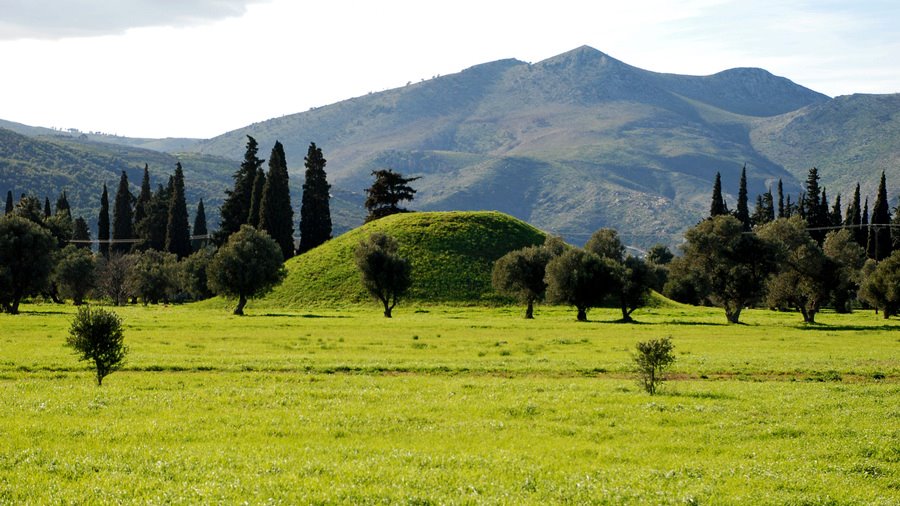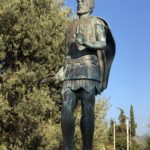5 Hours
Private Tour
English
UP TO 14 GUESTS
Marathon Battlefield Half Day Private Tour
Got a Question?
Contact UsHighlights

Marathon Battlefield private tour
- Tumulus of Athenians
- Marathon Archaeological Museum
- Marathon Battlefield
- Marathon Lake
- Marathon Bay
Itinerary
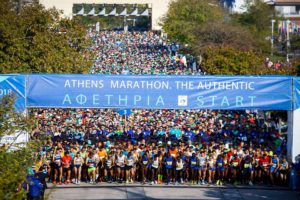 This tour addresses the lovers of the ancient Greek battles, those who want to see with their own eyes, a major battlefield of the Persian Wars, the plain of Marathon. From Athens, we will drive towards the sacred plane of Marathon through the Attica highway and Marathon Avenue where the original Marathon Race passes from, and you can see signs that count each kilometer.
This tour addresses the lovers of the ancient Greek battles, those who want to see with their own eyes, a major battlefield of the Persian Wars, the plain of Marathon. From Athens, we will drive towards the sacred plane of Marathon through the Attica highway and Marathon Avenue where the original Marathon Race passes from, and you can see signs that count each kilometer.
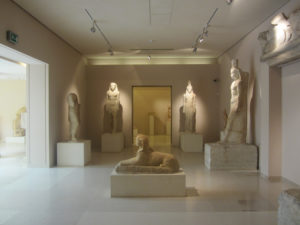 Later we will reach the Tumulus of Athenians; the site represents the courage, bravery and finally the victory of the Athenians against the Persians in 490 BC. Also, you will visit the Marathon Battlefield and Archaeological Museum of Marathon and a prehistoric cemetery that presents proof of the first civilized presence.
Later we will reach the Tumulus of Athenians; the site represents the courage, bravery and finally the victory of the Athenians against the Persians in 490 BC. Also, you will visit the Marathon Battlefield and Archaeological Museum of Marathon and a prehistoric cemetery that presents proof of the first civilized presence.
From there we will drive by the city of Marathon. Before leaving for Athens we will make our last stop at the lake of Marathon on the slopes of Mt Penteli, an artificial lake functioning still today as the main water reservoir for Athens.
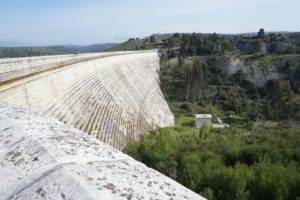 Apart from the magnificent view, you will be able to see the Marathon Dam, a miracle of engineering and the only one in the world made entirely of Pentelic marble (the king of marble, used for the Parthenon, on Acropolis Hill). Moreover, at the bottom, you will see an excellent modern replica of the treasury of the Athenians located initially in the sanctuary of Delphi. On our return trip, we will stop to enjoy a relaxing, traditional Greek lunch. And to conclude we will drive back to Athens.
Apart from the magnificent view, you will be able to see the Marathon Dam, a miracle of engineering and the only one in the world made entirely of Pentelic marble (the king of marble, used for the Parthenon, on Acropolis Hill). Moreover, at the bottom, you will see an excellent modern replica of the treasury of the Athenians located initially in the sanctuary of Delphi. On our return trip, we will stop to enjoy a relaxing, traditional Greek lunch. And to conclude we will drive back to Athens.
Inclusions - Exclusions
Private Tours are personal and flexible just for you and your party.
Inclusions:
-
Professional Drivers with Deep knowledge of history [Not licensed to accompany you in any site]
-
Hotel pickup and drop-off
-
Transport by private vehicle
- Bottled water
Exclusions:
- Entrance Fees [10€ for over 18 yo for Non EU & 25 yo for EU Citizens]
- Licensed Tour guide upon request depending on availability [Additional cost – 280 €]
- Airport Pick Up and drop-off (Additional cost)
- Food & Drinks
Entrance Fees
ADMISSION FEES FOR SITES:
Summer Period: 10€ per person
(1 April – 31 October)
Marathon Tomb & Museum: 10€ (08:00am- 15:30pm, Tuesdays closed)
Winter Period: 10€ per person
(1 November – 31 March)
Marathon Tomb & Museum: 10€ (08:00am- 15:30pm, Tuesdays closed)
Free admission days:
- 6 March (in memory of Melina Mercouri)
- 18 April (International Monuments Day)
- 18 May (International Museums Day)
- The last weekend of September annually (European Heritage Days)
- Every first and third Sunday from November 1st to March 31st
- 28 October
Holidays:
- 1 January: closed
- 25 March: closed
- 1 May: closed
- Easter Sunday: closed
- 25 December: closed
- 26 December: closed
Free admission for:
- Children & young people up to the age of 25 from EU Member- States
- Children & young people from up to the age of 18 from Non- European Union countries
- Persons over 25 years, being in secondary education & vocational schools from EU Member- States
- Escorting teachers during the visits of schools & institutions of Primary, Secondary & Tertiary education from EU Member- States
- People entitled to Social Solidarity income & members depending on them
- Persons with disabilities & one escort (only in the case of 67% disability)
- Refugees
- Official guests of the Greek State
- Members of ICOM & ICOMOS
- Members of societies & Associations of friends of State Museums & Archaeological sites
- Scientists licensed for photographing, studying, designing or publishing antiquities
- Journalists
- Holders of a 3- year Free Entry Pass
Reduced admission for:
- Senior citizens over 65 from Greece or other EU member-states, during
the period from 1st of October to 31st of May - Parents accompanying primary education schools visits from EU Member- States
- Escorting teachers of educational visits of schools & institutions of primary, secondary & tertiary education from non European Union countries
Reduced & free entrance only upon presentation of the required documents
History
MARATHON BATTLEFIELD:
At Marathon, we stood alone against Persia. And our courage in that mighty endeavor defeated the men of 46 nations.
Marathon was a battle of opposites. A tiny democratic city-state opposed a despotic empire hundreds of times its size. One army was almost entirely composed of armored infantrymen, the other of horsemen and archers. This clash of cultures was profound to affect the subsequent development of Western civilization.
Athens was then a city-state where a functioning democracy had been created just two decades earlier. The previous ruler of Athens, Hippias, had fled to the court of Darius 1 (521 – 486 BCE), king of Persia, whose empire stretched from the Aegean Sea to the banks of the Indus. Until they were conquered by Persia, the Greek colonies in Asia Minor had been independent. Unsurprisingly, they felt a greater affinity with their former homeland of Greece than with their ruler thousands of miles away in Persia. The Greeks of Asia Minor rebelled against the Persians and were assisted by Athenian soldiers who captured and burned Sardis, the capital of Lydia, in 498. Herodotus, the historian tells us: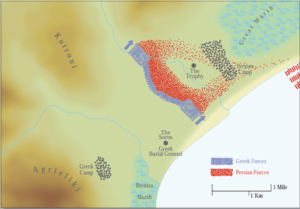
‘Darius enquired who these Athenians were, and on being told … he prayed “Grant to me, God, that might punish them”, and he set a slave to tell him three times as he sat down to dinner “Master, remember Athenians”.’
Marathon was some 40 km (25 miles) east of Athens. Modern research has moved the date of this landing to August from the traditional date in early September. The size of the invading force is uncertain, with some estimates as high as 100,000 men. Probably there were about 44,000 men, including oarsmen and cavalry. Marathon was chosen because it was sufficiently far from Athens for an orderly disembarkation and because the flat ground suited the Persian cavalry, which outmatched the Greek horse.
Hippias, the former tyrant of Athens, accompanied the invaders. It was hoped that his presence might inspire a coup by the conservative aristocrats of Athens and bring about a bloodless surrender.
The Spartans, the foremost military power in Greece were unfortunately tied up in religious rituals which would keep them occupied for the duration of the crisis. Only Plataea, a tiny dependency of Athens, sent reinforcements to the Athenian force which mustered before the plain of Marathon, in an area called Vrana between the hills and the sea.
The Athenians had about 7,200 men. They were mostly hoplites, a term which comes from the hoplon, the large circular shield which they carried. Each shield also offered support to the soldier on the shield bearer’s left, allowing this man to use his protected right arm to stab at the enemy with his principal weapon – the long spear. The Persian infantry preferred the bow and used it excellently. They fired from behind large wicker shields which protected them from enemy bow fire but were of doubtful value against attacking infantry.
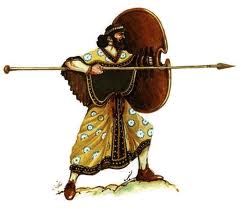 Miltiades, the Athenian leader, knew his enemy, for he had once served in the Persian army. Now he had to convince a board of ten fellow generals that his plan of attack would succeed. Each general commanded for one day in turn and, though they ceded that command to Miltiades, he still waited until his allotted day before ordering the attack.
Miltiades, the Athenian leader, knew his enemy, for he had once served in the Persian army. Now he had to convince a board of ten fellow generals that his plan of attack would succeed. Each general commanded for one day in turn and, though they ceded that command to Miltiades, he still waited until his allotted day before ordering the attack.
This delay was probably for military rather than political reasons. To neutralize the superior Persian cavalry the Athenians might have needed to bring up abates, spiky wooden defenses, to guard their flanks. Or they might have waited for the Persian cavalry to consume their available supplies and be forced to go foraging. Or Datis the Persian commander might have broken the deadlock by ordering a march on Athens.The Athenians deployed most of their strength on the wings, perhaps to buffer a cavalry thrust, or so that they could extend their line to counter a Persian envelopment. This left the center dangerously weak, especially as the toughest of the Persian troops were deployed against it. They charged down the slight downhill slope at a run. The startled Persians misjudged the speed of the Athenian advance, and many of their arrows sped over the hoplites’ heads and landed harmlessly behind them.
Though caught off balance, the Persians were tough and resilient fighters. They broke the Athenian center and drove through towards Athens. But the hoplite force destroyed the wings and rolled them up in disorder before turning on the Persian regulars who had broken their center. The fight boiled through the Persian camp as the Persians struggled to regain their ships, with those who failed being driven into the marshes behind the camp.
The Athenians captured only seven ships –perhaps because the Persian cavalry belatedly reappeared. Nevertheless, it was a stunning victory. Over 6,000 Persians lay dead for the loss of 192 on the Athenian side. But there was no time for self-congratulation. The Persian fleet then started heading down the coast to where Athens lay undefended. In the subsequent race between the army on land and the army at sea, the Athenians were again victorious. On seeing the Athenian army mustered to oppose their landing, the Persians hesitated briefly and then sailed away.
Outcome:
Without a Greek victory at Marathon, Athens might never have produced Sophocles, Herodotus, Socrates, Plato or Aristotle. The word might never have known Euclid, Pericles or Demosthenes – in short, the cultural heritage of Western civilization would have been profoundly altered.
Nor would a young runner called Phaedippides have brought news of the victory to Athens. Phaedippides had earlier gone to Sparta asking for help, and now his heart gave way under the strain of his exertions. But a run of 41 km (26 miles) is still named after the battle from which he came – a marathon.
COMBATANTS:
Greeks:
10,000 men, of which 7,200 were Athenian hoplite infantrymen
Commanded by Miltiades and Callimachus, 192 dead.
Persians:
45,000 – 50,000 men
Commanded by Datis, 6,400 dead (according to the Greeks).
Marathon Race History:
The ancient marathon, a race of 42,195 km that designated the grandeur of human strength. A legend of 2.500 years, beginning with the epic Pheidippides and reaching the modern heroes of classic sports. A race that unites millions of people all around the world. This is what the marathon run is about and what follows is its history…
Nenikékamen, (“We have won”)
The birth of the marathon basically identifies with the epic Battle of Marathon, in 490 BCE. The historians talk about the transmission of the joyous announcement of the Greek victory, from Marathon to Athens, by a soldier that covered 42,195 meters, in order to get from the plain of the battle to the current Greek capital. According to the legend, this soldier was Pheidippides, the famous runner of those times, who – according to Herodotus – was assigned to run a distance of 1.140 stages (more than two hundred kilometers) in two days, in order to get from Marathon to Sparta and ask for the help of Spartans, as soon as the Persians disembarked on the Attica Bay. Tradition says that, as soon as Pheidippides entered the settings of the Assembly of Parliament, he exclaimed the prominent “Nenikikamen” whereupon he promptly died of exhaustion …
No historical report, however, confirms that Pheidippides was the one who ran first the distance Marathon-Athens.
In the 1st century AD, Ploutarchos stated that the announcement of the Greek victory reached Athens through a simple Greek soldier, who fought in the Battle, named “Efklis”. Wearing his armor, Efklis ran 42.195 meters and in his footsteps, were meant to walk millions of people, centuries later…
The marathon in modern times:
When the modern Olympics began in 1896, the initiators and organizers were looking for a great popularizing event, recalling the ancient glory of Greece. The idea of a marathon race came from Michel Bréal, who wanted the event to feature in the first modern Olympic Games in 1896 in Athens. This idea was heavily supported by Pierre de Coubertin, the founder of the modern Olympics, as well as by the Greeks. The Greeks staged a selection race for the Olympic marathon on 10 March 1896 that was won by Charilaos Vasilakos in 3 hours and 18 minutes (with the future winner of the introductory Olympic Games marathon, Spyridon “Spyros” Louis, coming in fifth). The winner of the first Olympic Marathon, on 10 April 1896 (a male-only race), was Spyridon Louis, a Greek water-carrier, in 2 hours 58 minutes and 50 seconds. The marathon of the 2004 Summer Olympics was run on the traditional route from Marathon to Athens, ending at Panathinaiko Stadium, the venue for the 1896 Summer Olympics. That Men’s marathon was won by Italian Stefano Baldini in 2 hours 10 minutes and 55 seconds.
Cancellation Policy

Firstly and most importantly: All cancellations must be confirmed by Olive Sea Travel.
Regarding the Day Tours:
Cancellations up to 24 hours before your service date are 100% refundable.
Cancellation Policy:
- Licensed Tour Guides and Hotels are external co-operators & they have their own cancellation policy.
- Apart from the above cancellation limits, NO refunds will be made. If though, you fail to make your appointment for reasons that are out of your hands, that would be, in connection with the operation of your airline or cruise ship or strikes, extreme weather conditions or mechanical failure, you will be refunded 100% of the paid amount.
- If your cancellation date is over TWO (2) months away from your reservation date, It has been known for third-party providers such as credit card companies, PayPal, etc. to charge a levy fee usually somewhere between 2-4%.
- Olive Sea Travel reserves the right to cancel your booking at any time, when reasons beyond our control arise, such as strikes, prevailing weather conditions, mechanical failures, etc. occur. In this unfortunate case, you shall be immediately notified via the email address you used when making your reservation and your payment WILL be refunded 100%.
Booking Options Information
Booking Options:
Private Tour:
- Marathon Battlefield Private tour 5 Hours
- Pick up/ Drop off included
- Private tour- Flexible and customized upon your needs
- Tickets not included [6€ for over 6 yo for Non EU & 24 yo for EU Citizens]
Package Offer (2 Private Tours):
- Marathon Battlefield Private tour (5 hours)
- Athens Half Day Private tour(5 hours)
- Pick up/ Drop off included
- Tickets included for the Athens Half Day [Acropolis, Temple of Zeus, Ancient Agora]
- Ticket not included : [Acropolis Museum: 15€ per person/ If chosen to be visited instead of Ancient Agora][Marathon Tomb & Museum: 6€ per person]
- Private tour- Flexible and customized upon your needs
Athens Half private tour 5 Hours:
- Acropolis Hill – Propylaea – Parthenon – Erechtheion –Temple of Athena Nike
- Dionysus Theatre – Herodion Odeon
- Temple of Zeus – Arch of Hadrian
- Old Olympic Stadium
- Parliament – Changing of the Guards
- Academy of science – Athens University – National Library
- Lycabettus Hill
- Plaka (Old Town)
- Ancient Agora or Acropolis Museum
Please contact us after your booking if you are using a wheelchair or if you are travelling with infants
Recommended for you


